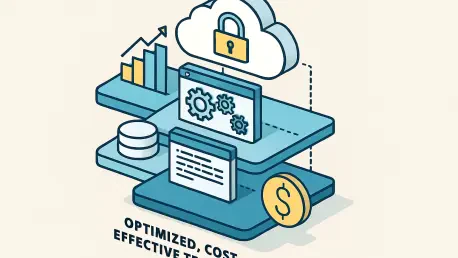Listen to the Article
Most IT leaders don’t build with waste in mind. They architect systems to be secure, functional, and scalable. But somewhere between rapid innovation cycles, shifting stakeholder priorities, and ballooning software portfolios, even the best-intentioned tech strategies end up bloated, brittle, and wildly expensive.
Today’s enterprise tech stacks are haunted by duplication, misaligned tools, and opaque cost structures—systems that promise agility but quietly drain budgets and stall growth.
If you’re wondering how to regain control, reduce complexity, and build something that lasts, this article is your blueprint.
Your Stack Isn’t Broken—Your Alignment Is
It’s easy to blame poor performance on software limitations or system gaps. But often, the deeper issue isn’t the tools themselves—it’s how they’re implemented, integrated, and managed.
Most organizations run dozens of tools across teams, many with overlapping functionality: multiple CRMs, redundant analytics platforms, standalone project trackers, and fragmented security layers. Each system may serve a purpose, but not necessarily the same one. And that’s where the cracks begin to show.
You’re not suffering from a lack of tech, but rather tech that exists in isolation, doesn’t scale with your goals, and doesn’t justify its cost.
Future-proofing means bringing clarity to the chaos. It means auditing for redundancy, reducing overlap, and investing in modular, interoperable platforms that flex as your business evolves, not tools that box you in.
Control Doesn’t Mean Custom-Building Everything
There’s a long-standing belief in enterprise IT that control equals ownership. You want to own your codebase, your cloud environment, and your integration paths because that’s what ensures flexibility and security. Or so many have told themselves.
But that belief often leads to custom-built tools that age poorly, cost more to maintain, and require niche internal expertise just to stay functional. You end up with a tech stack that’s so tailored it can’t grow—locked into systems that don’t play well with others.
The smarter approach? Standardize where it counts. Choose platforms that are robust, open, and built to integrate. Leverage prebuilt APIs, scalable middleware, and low-code tools that empower your teams without overengineering the solution.
Control shouldn’t come at the cost of agility. The most future-ready stacks are designed to flex, not fossilize.
Performance Is a Function of Fit
Your teams don’t care about the elegance of your backend. They care that the tools they use help them do their jobs faster, better, and with less friction. When your stack is aligned to real workflows across marketing, finance, operations, and IT, you’ll see performance gains where it matters most: execution.
A future-proof stack starts with user-centered design. Evaluate where you’re standing with these questions:
Do your tools reflect how people actually work, or how you think they should?
Are you paying for capabilities no one uses—or worse, no one knows about?
Are your licensing costs scaling with business value, or just user seats?
The value of your stack is measured by how well it supports speed, clarity, and outcomes, without bogging teams down in tech debt or manual workarounds.
Efficiency Is the New Innovation
When the economy tightens and budgets stall, innovation doesn’t stop—it just looks different. You stop chasing “what’s next” and start squeezing more value out of what you already have.
But here’s the truth: most companies don’t know what they already have.
Shadow IT, outdated contracts, shelfware: these are the hidden culprits behind bloated budgets. Future-proofing means facing the uncomfortable questions like:
What is being paid for?
Who’s using it?
What can be consolidated?
You need to free up resources tied to underutilized tech to make room for real innovation. Reducing waste saves money and unlocks the capacity to invest in higher-value tools, smarter automation, and better customer experiences.
The Playbook to Get You Started
You see the problem, you have the theory, so now, how do you future-proof your tech stack without triggering a systemwide overhaul?
Here’s a playbook:
Audit What You Own
Map your stack across departments, document usage patterns, and identify tools with overlapping features, because you can’t fix what you can’t see. Be brutal: if no one’s using it, you don’t need it.
Consolidate, Then Modularize
Start by retiring redundant tools and consolidating vendors where possible. From there, rebuild modularly—choosing platforms with open APIs, flexible integrations, and strong ecosystem support. Build with interoperability in mind, not just brand prestige.
Don’t Just Buy—Train and Align
New tools won’t drive value if no one knows how to use them. Invest in onboarding, role-specific training, and ongoing support. Ensure IT, finance, and operations teams are aligned on how and why the stack is changing.
Build Governance into the Stack
Tech sprawl is often the result of weak procurement and a lack of governance. Define who can purchase tools, how licenses are managed, and what qualifies as business-critical tech. Clear policies reduce risk, cost, and compliance headaches.
Monitor for Outcomes, Not Just Uptime
Future-proofing isn’t just a technical metric. Track performance through business outcomes: faster onboarding, improved net promoter scores, reduced churn, and increased campaign velocity. Let value drive your decisions.
Culture Will Make or Break Your Stack
The hardest part of tech transformation is the people. You’re asking teams to change how they work, let go of familiar systems, and trust in something new. That requires leadership.
Build buy-in early. Share the “why” behind every decision. Involve stakeholders in testing and feedback loops. And remember: resistance isn’t incompetence—it’s a signal. Use it to refine your rollout and improve the system.
A future-proof tech stack is only as strong as the culture that supports it. Empower your people, and your systems will follow.
Spending Right
Cutting costs is easy. Building sustainable value is harder. A future-proofed tech stack isn’t the cheapest—it’s the most aligned to your business goals, team needs, and growth plans. It scales with you, not ahead of you. It simplifies decisions, accelerates output, and adapts to change. And most importantly, it doesn’t require starting from scratch.
You already have the foundation. The opportunity is to refine it with intention, intelligence, and a focus on what truly drives results. The path forward is smarter choices.
So take the first step: Audit what you have, rethink what you need, and rebuild for a future that’s lean, agile, and built to last.









